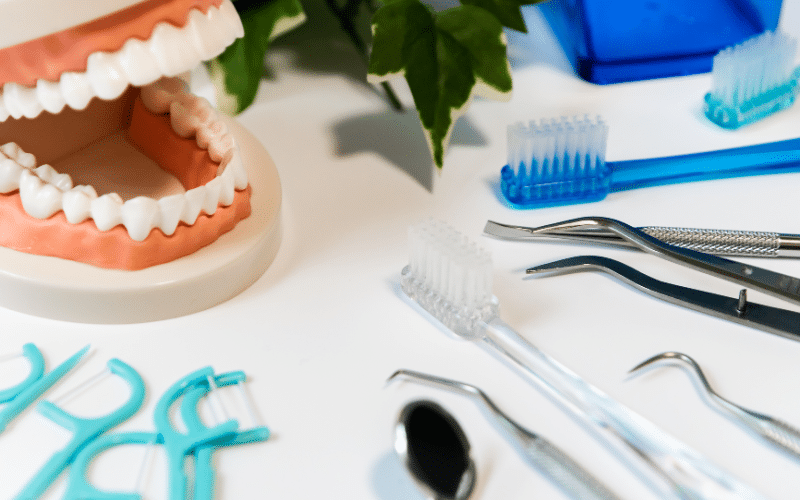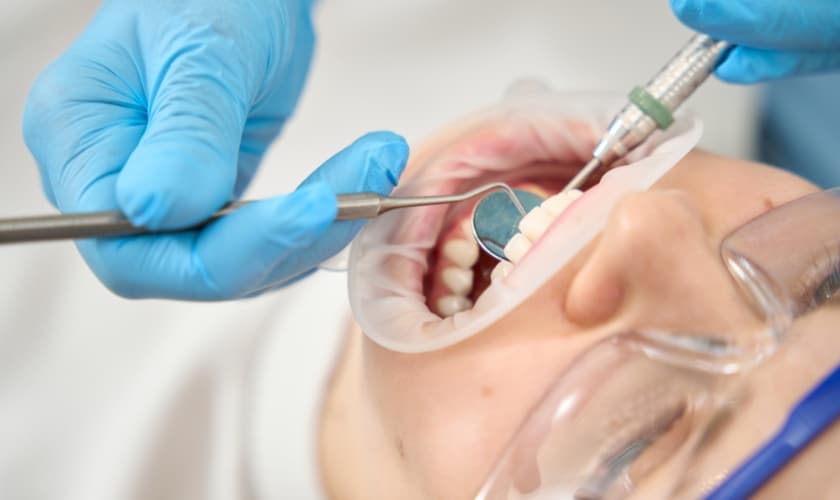Dental implants have become the gold standard for tooth replacement, offering durability, aesthetic appeal, and functionality. However, the success of dental implants depends on more than just the surgical procedure itself.
The health of the surrounding gum tissue is crucial for implant longevity, which is where periodontal therapy comes into play. In this blog, we’ll explore how periodontal therapy supports dental implants, why it’s essential, and how it can improve your oral health and implant success.
About Dental Implants
Before diving into the role of periodontal therapy, let’s first clarify what dental implants are and how they function. Dental implants are artificial tooth roots, usually made of titanium, surgically inserted into the jawbone to hold a replacement tooth or bridge. Once placed, the implant fuses with the bone through a process called osseointegration, creating a strong foundation for artificial teeth.
Dental implants are popular due to their durability and natural appearance. However, they rely on the health of surrounding tissues—particularly the gums and bone—for long-term success. This is where periodontal therapy becomes crucial.
Periodontal Health In Dental Implants
Periodontal health is the foundation of any successful dental implant. Gums not only provide a seal around the implant, preventing bacteria from reaching deeper tissues, but they also support the underlying bone structure, which holds the implant in place. Without healthy gums, the stability of dental implants can be compromised.
Why Periodontal Health Matters?
- Protection from infection: Healthy gums act as a barrier, preventing bacteria from penetrating deeper into the bone.
- Support for osseointegration: Gum health promotes bone health, which is critical for the implant to fuse successfully with the jawbone.
- Prevention of peri-implantitis: Periodontal disease around dental implants can lead to peri-implantitis, an infection that damages the gum and bone around the implant, causing implant failure.
Thus, periodontal therapy helps keep the gums healthy and capable of supporting dental implants over the long term.
What’s a Periodontal Therapy?

Periodontal therapy refers to treatments that target the gums and the structures that support the teeth and implants. It includes a variety of procedures designed to prevent, diagnose, and treat periodontal diseases.
These treatments are not only essential for keeping natural teeth healthy but are also crucial for maintaining the integrity of dental implants.
Here are some common periodontal therapy treatments:
- Scaling and Root Planing: Deep cleaning procedures that remove plaque and tartar from below the gum line and smooth the tooth roots to promote gum reattachment.
- Gum Grafting: Used to treat receding gums and cover exposed tooth or implant roots.
- Bone Grafting: A procedure to regenerate lost bone, especially important for implant placement and stabilization.
- Laser Therapy: Non-invasive treatment to remove diseased gum tissue and promote healthy regeneration.
- Antibiotic Therapy: Use of localized antibiotics to reduce bacterial infections in the gums.
How Periodontal Therapy Enhances Implant Success?
- Pre-Implant Preparation: Ensuring Optimal Gum Health
Before undergoing dental implant surgery, your periodontist will likely assess your gum health. Any signs of gum disease, such as inflammation, deep pockets, or infection, must be addressed before an implant can be placed. This is where periodontal therapy plays its first critical role.
- Scaling and Root Planing: If early gum disease (gingivitis or mild periodontitis) is detected, deep cleaning procedures like scaling and root planing may be performed to remove plaque and bacteria, ensuring a healthy environment for implant placement.
- Bone Grafting: For patients with bone loss due to advanced periodontal disease, bone grafting may be necessary to rebuild the jawbone and provide sufficient support for the implant.
By ensuring a healthy gum and bone structure, periodontal therapy maximizes the chances of successful implant osseointegration.
- Post-Implant Care: Preventing Peri-Implant Disease
After an implant is placed, ongoing periodontal care is essential to prevent peri-implant diseases such as peri-implant mucositis (gum inflammation) and peri-implantitis (inflammation of both the gums and the bone surrounding the implant).
- Routine Cleanings and Monitoring: Regular periodontal maintenance, including professional cleanings and assessments, helps monitor the health of the gum tissue around the implant and catch any signs of inflammation early.
- Laser Therapy for Early Infections: If mild inflammation or infection is detected, laser therapy can be used to remove infected tissue while promoting healing without invasive surgery.
- Managing Gum Recession: Protecting the Implant
Gum recession can expose the dental implant or its supporting structure, leading to aesthetic concerns and a higher risk of infection.
- Gum Grafting: If gum recession occurs around a dental implant, periodontal therapy such as gum grafting can cover the exposed area, protecting the implant and improving the appearance of the gum line.
- Tissue Regeneration: In cases where both bone and gum tissue have been lost, periodontal regenerative procedures may be performed to rebuild the tissue and strengthen the implant site.
Gum grafting and tissue regeneration are critical for protecting implants from further damage and restoring the patient’s smile.
- Long-Term Maintenance: Ensuring Implant Longevity
The long-term success of dental implants depends not only on the initial surgery but also on how well the surrounding tissues are maintained over time. Periodontal therapy plays a vital role in ongoing care by:
- Monitoring Bone Health: Regular periodontal assessments help monitor bone levels around the implant. If bone loss is detected early, treatments like bone grafting can stabilize the implant.
- Promoting Healthy Gum Attachment: Periodontal treatments help maintain the natural seal between the gum and the implant, preventing bacteria from infiltrating the deeper tissues.
Benefits of Periodontal Therapy for Dental Implants
- Prevents Peri-Implant Disease: Reduces the risk of infections and inflammation around the implant.
- Improves Osseointegration: Ensures the implant bonds strongly with the jawbone by promoting healthy bone and gum tissue.
- Enhances Aesthetic Results: Gum grafting and other therapies can enhance the appearance of the gums around the implant, ensuring a natural-looking smile.
- Protects Implant Longevity: Regular periodontal maintenance supports the overall health of the gums and bone, extending the life of the dental implant.
A Team Effort for Implant Success
The success of dental implants is not solely reliant on the surgical procedure itself but is a continuous process that depends on the health of the surrounding tissues. Periodontal therapy plays a vital role in preparing the gums and bone before implant placement, preventing complications after surgery, and maintaining the overall health of the implant site in the long term.
By integrating periodontal care into your dental routine, you are investing in the health and longevity of your dental implants. Healthy gums mean a healthy foundation for your implants, ensuring that your new smile lasts a lifetime.
If you’re considering dental implants or already have them, talk to your periodontist about the best periodontal therapy options for you.





